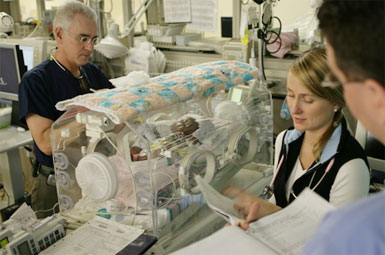
The Royal College of Radiologists in the UK has published a guideline document to set standards related to diagnostic and interventional radiology for use by major trauma centres (MTCs) and trauma units (TUs). The standards are:
- The trauma team leader is in overall charge in acute care
- Protocol-driven imaging and intervention must be available and delivered by experienced staff. Acute care for SIPs must be consultant delivered
- MDCT should be adjacent to, or in, the emergency room
- Digital radiography must be available in the emergency room
- If there is an early decision to request MDCT, FAST and DR should not cause any delay
- MRI must be available with safe access for the SIP
- A CT request in the trauma setting should comply with the Ionising Radiation (Medical Exposure) Regulations 2000 (IR(ME)R) justification regulations like any other request for imaging involving ionising radiation
- There should be clear written protocols for MDCT preparation and transfer to the scan room
- Whole-body contrast-enhanced MDCT is the default imaging procedure of choice in the SIP. Imaging protocols should be clearly defined and uniform across a regional trauma network
- Future planning and design of emergency rooms should concentrate on increasing the numbers of SIPs stable enough for MDCT and intervention
- The primary survey report should be issued immediately to the trauma team leader
- On-call consultant radiologists should provide the final report on the SIP within one hour of MDCT image acquisition
- On-call consultant radiologists must have teleradiology facilities at home that allow accurate reports to be issued within one hour of MDCT image acquisition
- IR facilities should be co-located to the emergency department
- Angiographic facilities and endovascular theatres in MTCs should be safe environments for SIPs and should be of theatre standard
- Agreed written transfer protocols between the emergency department and imaging/interventional facilities internally or externally must be available
- IR trauma teams should be in place within 60 minutes of the patient’s admission or 30 minutes of referral
- Any deficiency in consumable equipment should be reported at the debriefing and be the subject of an incident report
Some interesting snippets include:
IV access
Right antecubital access is preferred for contrast administration (left-sided injections compromise interpretation of mediastinal vasculature). However, if arm vein access is not possible and a central line is in situ, it should be of a type that can accept 4 ml contrast/ second via a power injector. This might require local negotiation with emergency department doctors beforehand
Pelvic fracture
If a pelvic fracture is suspected, a temporary pelvic stabilisation (wrap, binder and so on) should be applied before MDCT.
Limb fractures
Rapid immobilisation such as air splints. Only immediately limb conserving manipulations/splinting should be performed prior to CT.
Urinary catheter
All significantly injured patients without obvious contraindications should be catheterised unless this would delay transfer to CT. The catheter should be clamped prior to MDCT.
Standards of practice and guidance for trauma radiology in severely injured patients
Royal College of Radiologists – Full Text Link






